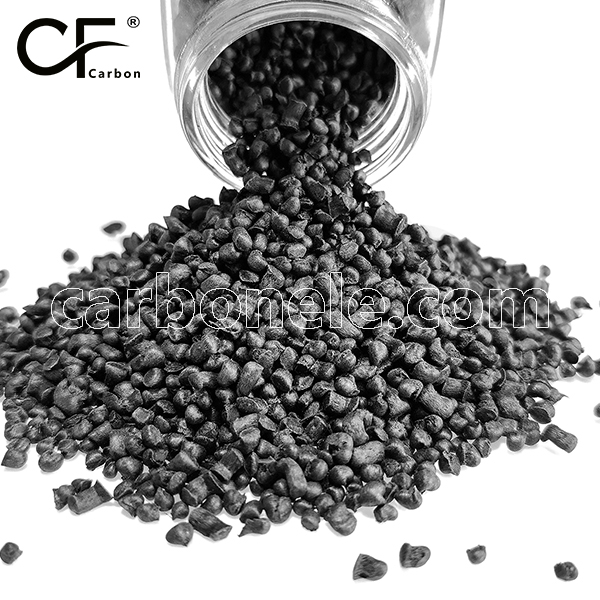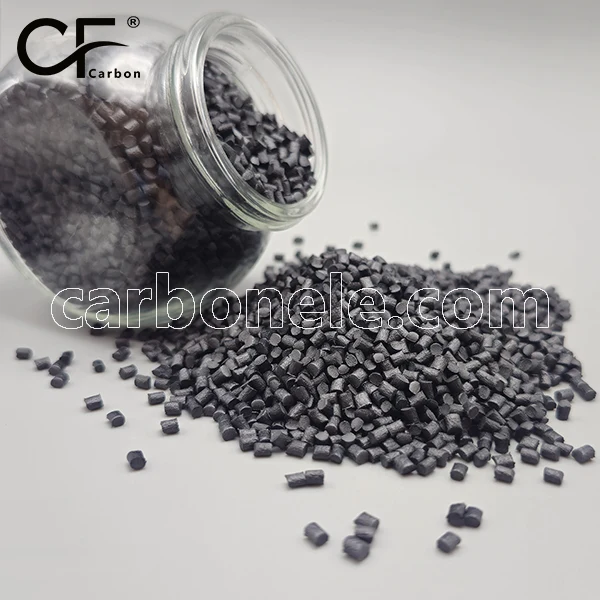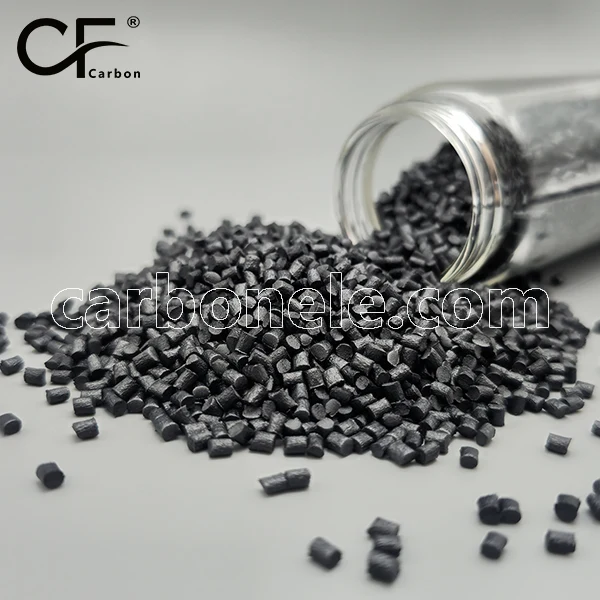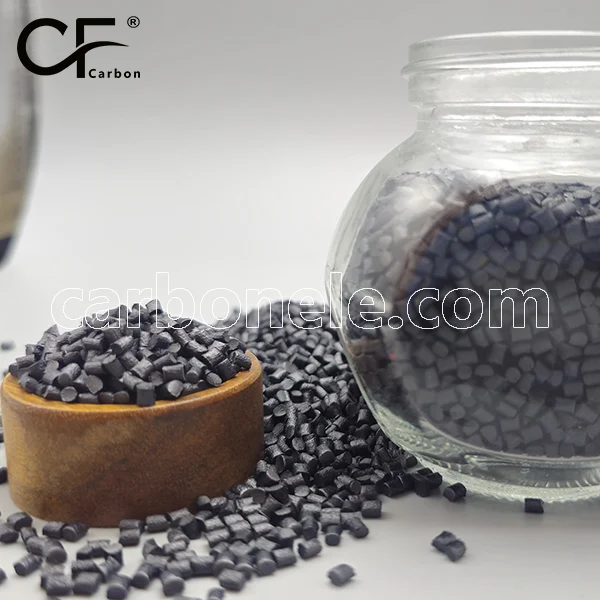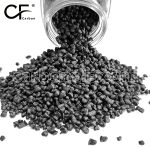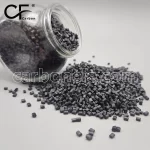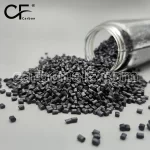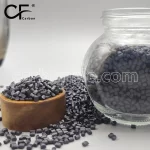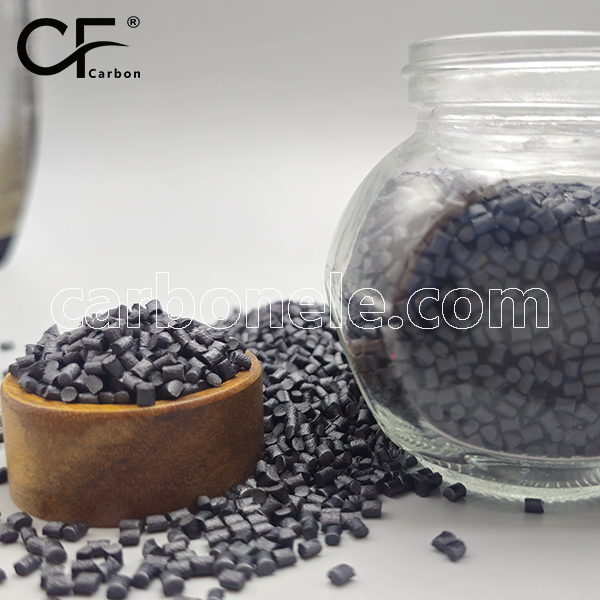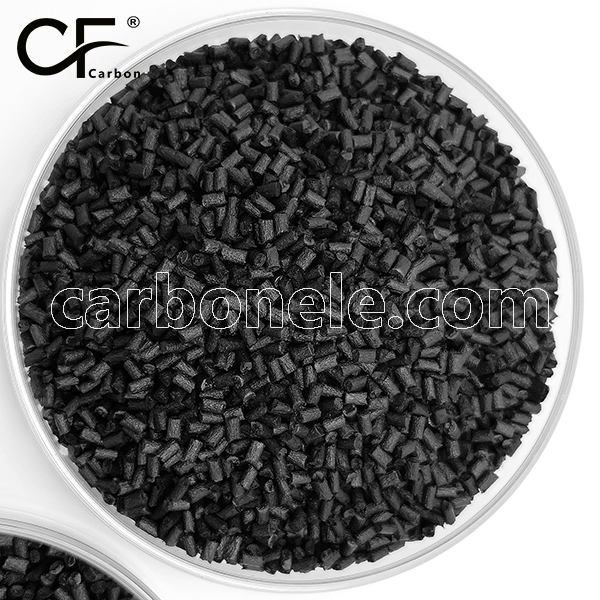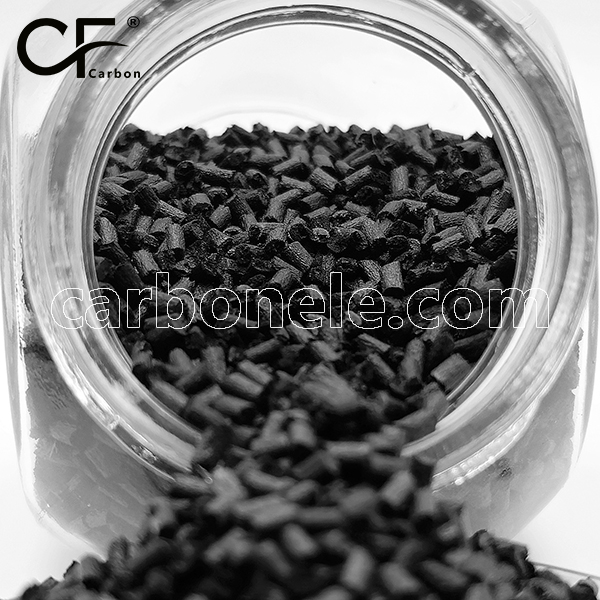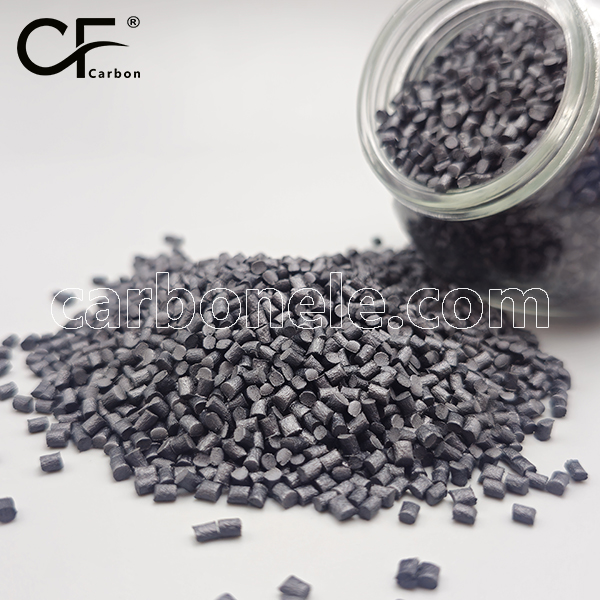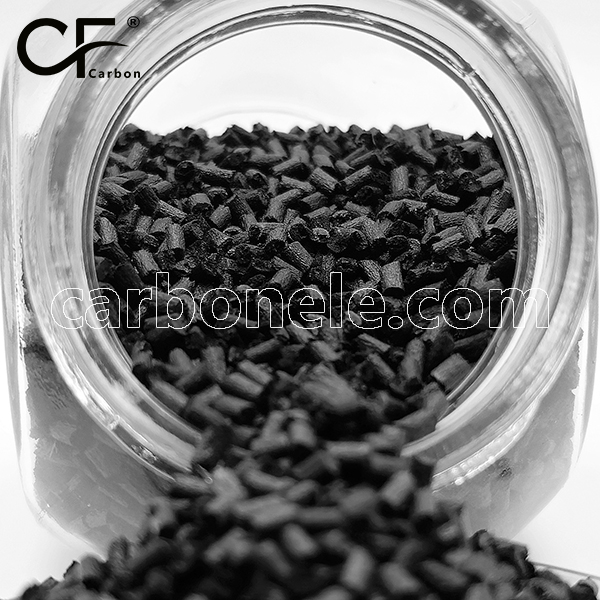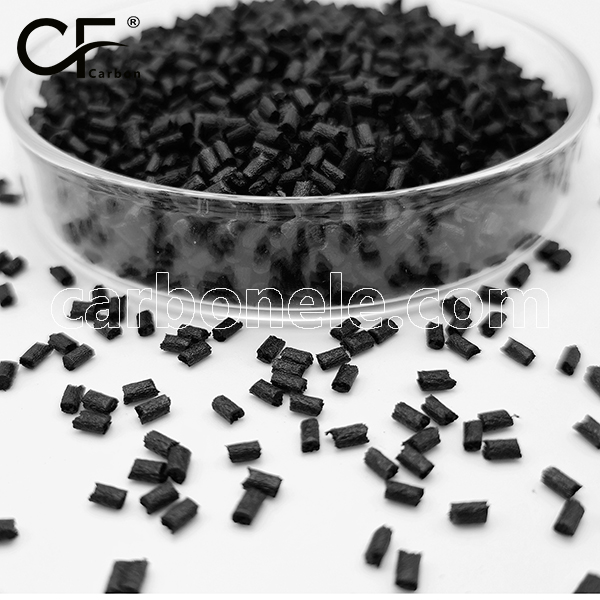
Polylactic Acid PLA Carbon PLA CF50 Masterbatches
1: Tensile strength of 128 MPa.
2: Flexural strength reaches 185 MPa.
3: Heat deflection temperature 98°C.
4: Flexural modulus of 16.2 GPa.
5: Impact strength 45 kJ/m².
- Manufacturer: Carbon New Material
- OEM/ODM: Acceptable
- Color: Black
- Free samples: ≤10kg
- MOQ: 100kg
- Port: Xiamen
- Model: PLA-CF-BCA5
- Fillers: SCF
I. PLA CF50 Masterbatches
PLA CF50 is a high-load carbon fiber reinforced composite material formulated with bio-based polylactic acid and 50% specialty carbon fiber. These Polylactic Acid Carbon materials utilize proprietary interface modification technology to significantly enhance mechanical properties and thermal stability while maintaining PLA’s biodegradability. PLA CF50 Masterbatches offer excellent dispersion and compatibility, providing reliable masterbatch solutions for manufacturing high-performance engineering plastic products.
II. Key Properties of PLA CF50 Material
1. Exceptional Mechanical Strength Products made from PLA CF50 Masterbatches achieve tensile strength of 128MPa and flexural strength of 185MPa, over 220% higher than base PLA, providing top-level mechanical support for Polylactic Acid Carbon composites.
2. Superior Stiffness Performance Flexural modulus reaches 16.2GPa with elastic modulus of 13.5GPa, enabling PLA CF50 products to exhibit minimal deformation under stress and achieve top-level dimensional stability among engineering plastics.
3. Excellent Thermal Stability Heat deflection temperature (1.82MPa) reaches 98°C, with Vicat softening point at 110°C, approximately 55°C higher than unreinforced PLA, significantly expanding the application range of Polylactic Acid Carbon materials.
4. Precise Dimensional Control Molding shrinkage rate of only 0.08%-0.25% with thermal expansion coefficient of 1.5×10⁻⁵/°C ensures extremely high dimensional accuracy and stability for products made from PLA CF50 Masterbatches.
5. Outstanding Impact Resistance Izod impact strength reaches 45kJ/m², approximately 180% higher than standard PLA, offering excellent toughness while maintaining high stiffness.
III. Material Primary Applications
The PLA CF50 composite material is widely used in automotive lightweight components, drone load-bearing structures, medical device housings, high-end electronic products, and industrial machinery parts. Its exceptional comprehensive properties and environmental characteristics make it an ideal alternative to traditional engineering plastics.
IV. Application of PLA CF50 in Medical Stretchers
A medical device manufacturer utilizes Polylactic Acid Carbon material to manufacture the main structure of portable emergency stretchers. The excellent processing performance of PLA CF50 Masterbatches ensures precise molding of complex curved structures, while its 128MPa tensile strength and 16.2GPa flexural modulus provide sufficient load-bearing capacity. In practical tests, the stretcher withstands 200kg static load with deformation less than 1.5%, achieves 45% weight reduction compared to traditional aluminum structures, and offers X-ray transparency for medical examinations. The successful application of PLA CF50 in this medical equipment demonstrates its practical value in high-end medical device applications.
For access to the technical data sheet, detailed specifications, current quotations, or complete product catalog, please contact us. Please note that properties of different carbon fiber reinforced thermoplastic composites may vary depending on matrix resin type, carbon fiber content and specifications, and manufacturing process parameters. The actual advantages of specific PLA CF50 formulations are recommended to be accurately evaluated through comparative testing with other relevant reinforced engineering plastics based on your specific application requirements. Additionally, Polylactic Acid Carbon materials from different suppliers may have varying performance emphases.
CFRTP VERSUS CFRP
1. CFRTP demonstrates significantly faster processing time (5 minutes) compared to CFRP (45 minutes), representing a 90% reduction in manufacturing duration. 2. In terms of recyclability, CFRTP outperforms CFRP by a large margin, scoring 9 on a 1-10 scale versus CFRP's score of 2. 3. CFRTP exhibits superior impact resistance (90 kJ/m²) compared to CFRP (65 kJ/m²), showing approximately 38% better performance in this category. 4. While CFRP has higher temperature resistance (220°C) than CFRTP (180°C), both materials maintain adequate thermal performance for most applications. 5. CFRTP offers greater design flexibility (rating of 90) compared to CFRP (rating of 60), providing more versatility in manufacturing and application scenarios.

CFRTP VS. METALS
1. CFRTP exhibits the lowest density (1.50 g/cm³) among all compared materials, significantly outperforming traditional metals like steel (7.85 g/cm³) and copper (8.96 g/cm³), and even surpassing aluminum (2.70 g/cm³) and aluminum alloy (2.80 g/cm³). 2. In terms of strength-to-weight ratio, CFRTP demonstrates superior performance at 120 kN·m/kg, more than doubling the ratio of aluminum alloy (68 kN·m/kg) and far exceeding steel (26 kN·m/kg) and copper (14 kN·m/kg). 3. While steel shows the highest stiffness (200 GPa), CFRTP (150 GPa) outperforms aluminum (70 GPa), aluminum alloy (72 GPa), and copper (110 GPa), offering a favorable balance of rigidity and lightweight properties. 4. CFRTP achieves the highest corrosion resistance rating (9 on a 1-10 scale), surpassing all other materials including aluminum alloy (8), aluminum (7), copper (6), and steel (3), making it ideal for corrosive environments.
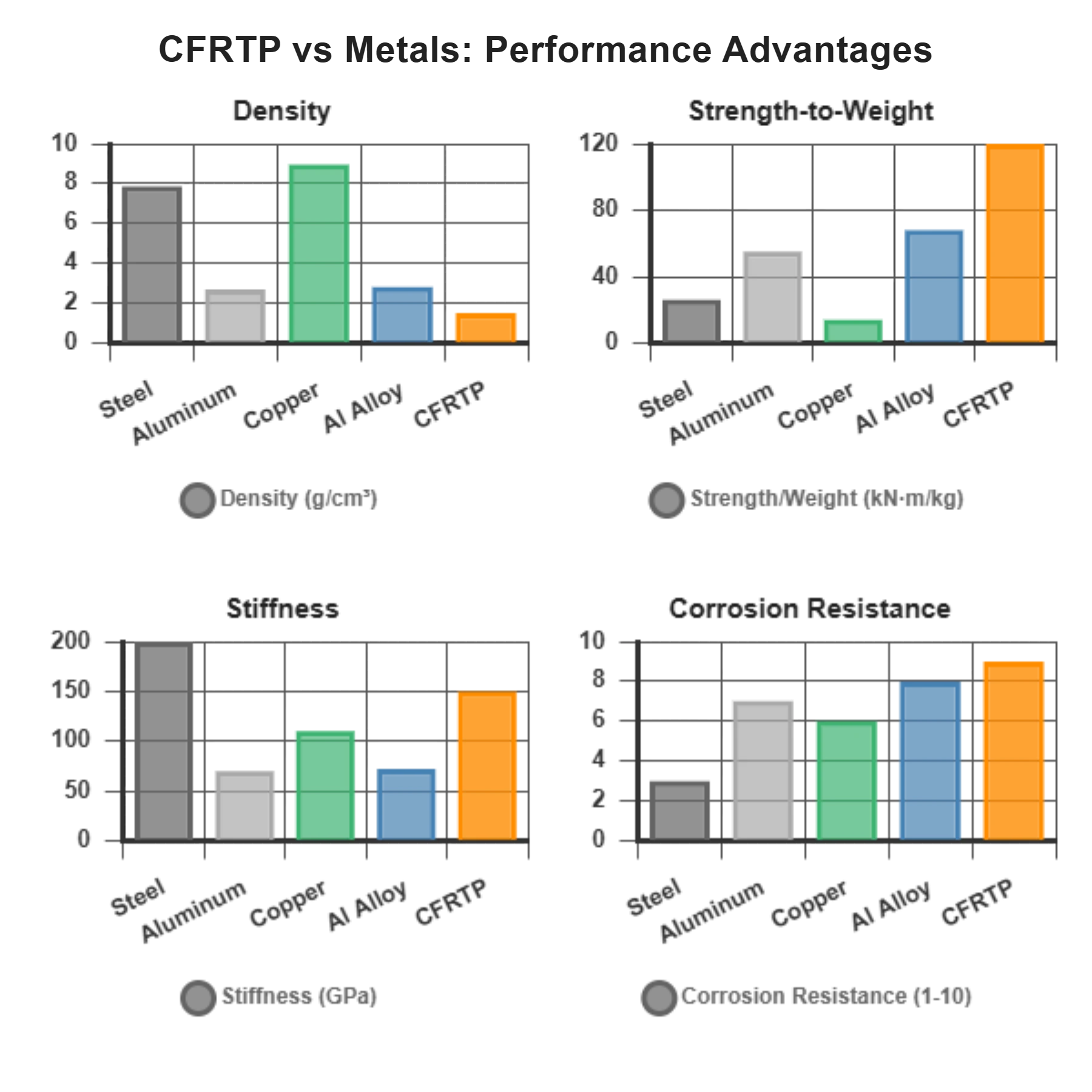
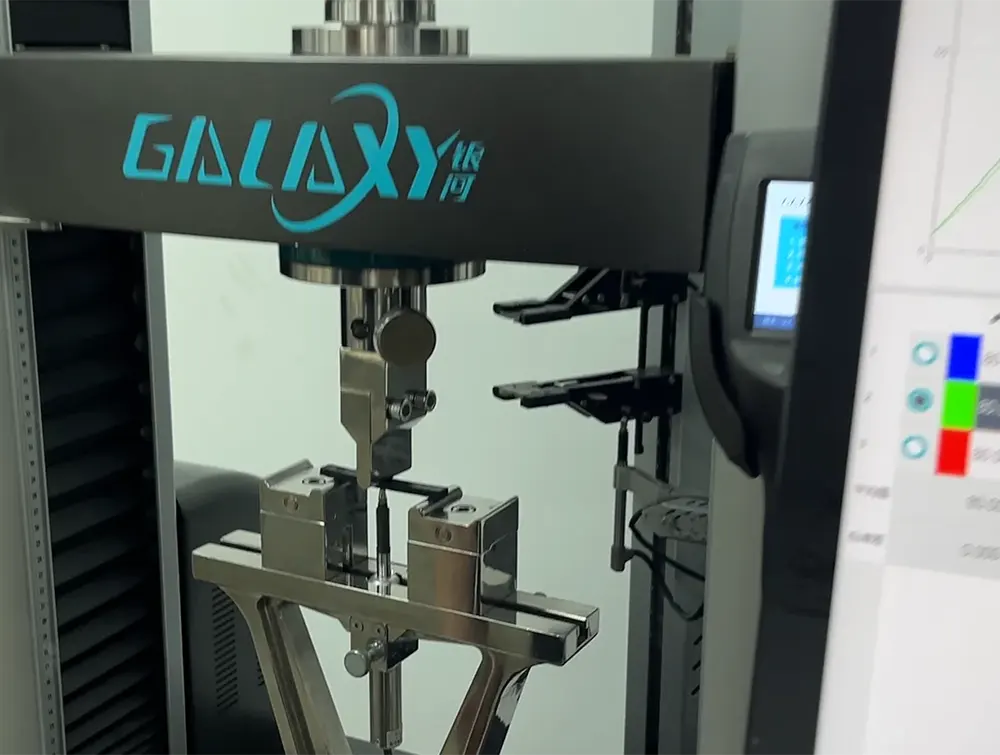

Frequently Asked Questions
Carbon (Xiamen) New Material Co., Ltd. aims to provide buyers with "one-stop" worry-free high-quality services. Here you can find all information about carbon fiber engineering plastics. If you still have questions, please send us an email for consultation!
-
How can I contact the manufacturer of a product that interests me?
When you find a product you are interested in, you can contact the manufacturer directly by sending an email and we will get back to you as soon as possible.
-
How do I find the products that interest me?
All you need to do is enter the keyword, product name in the search window and press the Enter key on your keyboard. Your search results page will then be displayed. You can also search within the product category pages on the home page. Each category is divided into subcategories, allowing you to refine your search and find products that interest you.
-
Where will I find a buying guide?
Please contact our after-sales service directly and we will provide you with a comprehensive operating guide.
-
What are CF Reinforced Thermoplastic Composites?
CF Reinforced Thermoplastic Composites are materials where carbon fibers are incorporated into a thermoplastic matrix. They combine the strength and stiffness of carbon fibers with the processability and recyclability of thermoplastics. For instance, they are used in automotive parts like bumper beams.
-
What are the benefits of CF Reinforced Thermoplastic Composites over traditional composites?
The key benefits include faster production cycles, easier recyclability, and better impact resistance. They also offer design flexibility. An example is in the manufacturing of consumer electronics casings where complex shapes can be achieved more easily.
-
How are CF Reinforced Thermoplastic Composites processed?
Common processing methods include injection molding, extrusion, and compression molding. Injection molding is widely used for mass production. For example, in the production of small components for the medical industry.
-
What industries use CF Reinforced Thermoplastic Composites?
They are utilized in aerospace, automotive, medical, and sports equipment industries. In aerospace, they can be found in interior components. In the medical field, they might be used in prosthetics.
-
How does the carbon fiber content affect the properties of the composites?
Higher carbon fiber content generally leads to increased strength and stiffness but may reduce ductility. A moderate content is often balanced for specific applications. For example, a higher content might be preferred in structural parts of a race car.
-
What are the challenges in using CF Reinforced Thermoplastic Composites?
Challenges include higher material costs, complex processing equipment requirements, and ensuring uniform fiber dispersion. Issues with adhesion between the fibers and the matrix can also arise. An example is in achieving consistent quality in large-scale production.







